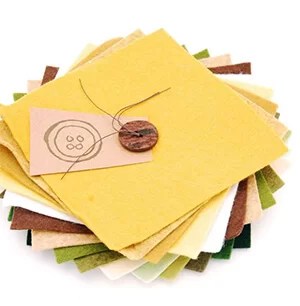
A few days ago I showed you a series of DIY felt brooches that he had given to family and friends (you can see them at this link). As a result, on Facebook they suggested that I make a tutorial on how to make the patterns, assemble the pieces, etc. For this reason, I have decided to launch this Felt workshop from scratch.
Over the next few weeks, new workshop entries will be posted for anyone to learn how to make felt crafts. If you don’t want to miss any chapter, you can subscribe to the blog from this link.
At first I was going to start directly with the pattern but I think it is important know a little about this material. As well as, what type of felt we should use according to the craft we are going to make and where to find it.
What is felt?
Felt is mainly made from wool and also with animal hair such as alpaca or mohair.
It is a fabric that is not woven. Although it sounds strange, it means that it is not made by intertwining threads as is the case with cloth, but rather takes advantage of the fact that the wool fibers are made up of small scales. These flakes bind together to form a network when treated with various techniques (heat fusion, dissolution or mechanical pressure).
For this reason, felt can be cut cleanly as it is not made up of threads so it cannot fray.
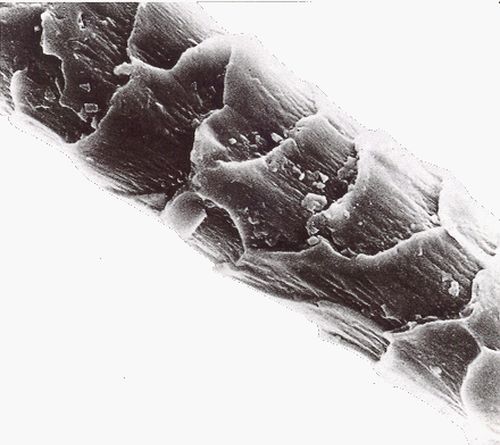
types of felt
- The felt that is normally used to make brooches, key rings, covers, etc., is sold in sheets of different sizes and thicknesses (approximately between 1 and 3 millimeters).
- Its composition can vary from 100% wool, to a wool blend or synthetic. Wool or blend felt is commonly used in crafts and is usually of better quality than synthetic. Its texture is softer and provides a neat look to our work.
- synthetic felt or lenci cloth It is not felt itself as it does not come from wool. It has similar characteristics although its texture is more rigid, similar to that of cardboard.
- Other types of felt that we can find on the market are adhesive felt -one of its faces is adhesive-, and skeins of combed wool for felting.
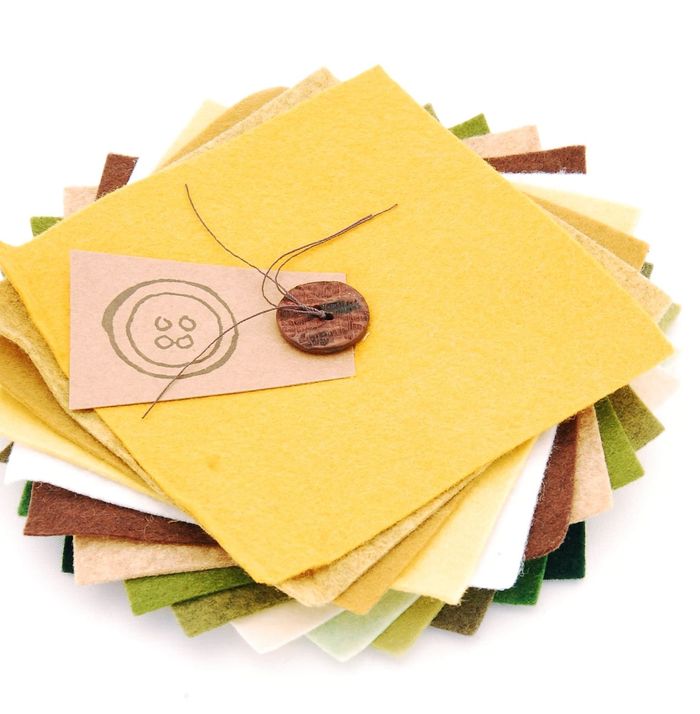
colored and patterned
Surely we associate felt with vivid colors and striking but it is also possible to find it if we search a little in softer and pastel tones.
The bicolor felt It is a very interesting option for floral compositions. This felt is distinguished because one of its faces is of one color and the other is of a similar or totally different one.
Finally we can find patterned felt with which to create bags or covers, and even the clothes of our figures and brooches. When using the stamped felt we must choose a motif that fits the size of our craft. For example, if we choose a large pattern for a brooch, it will hardly be appreciated.
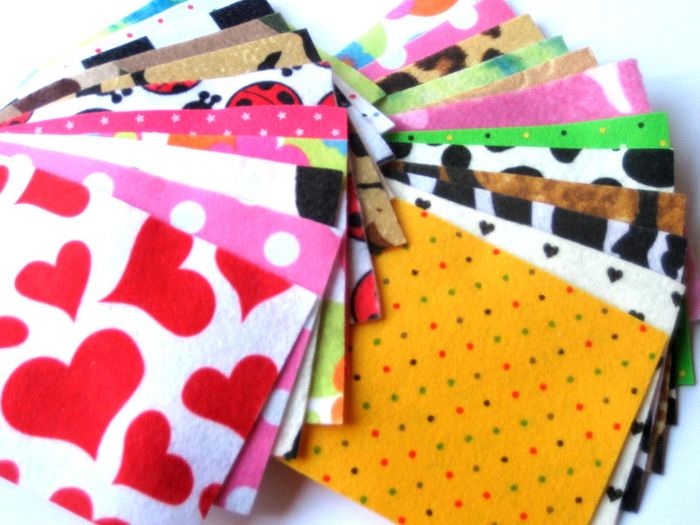
What felt should we use?
As I have mentioned before, the felts that are usually used in crafts are wool or wool blends, but we should not totally rule out synthetics for that. Its rigidity may be more convenient for certain jobs.
The wool and blend felts they are quite flexible and are very suitable for making figures that we are going to fill (for example animals, dolls…). As well as floral compositions since it gives more body to the flower.
On the other hand, within the synthetic felts there are different qualities. I personally advise the following:
- Always look for one that has a nice touch and not too rough.
- This type of felt is easier to cut and is ideal for making small flat pieces with which to decorate a felt doll (for example the pockets of a coat or a belt).
- You should also use it whenever you want cover a piece with fabric (for example a dress), since it is not worth using wool felt and then hiding it behind a cloth.
In addition to the material with which the felt has been made, we must take into account the thickness of the same:
- uses felts between 1 and 2 millimeters thick since they work better than the thicker ones.
- In the event that we are going to make a figure to fill, we must use a felt 1 millimeter thick or less than 2 millimeters.
- If it is a flat figure, we can use 2-millimeter felt as long as we do not use it for very small pieces. In that case it is more convenient to use the 1 millimeter thick felt.
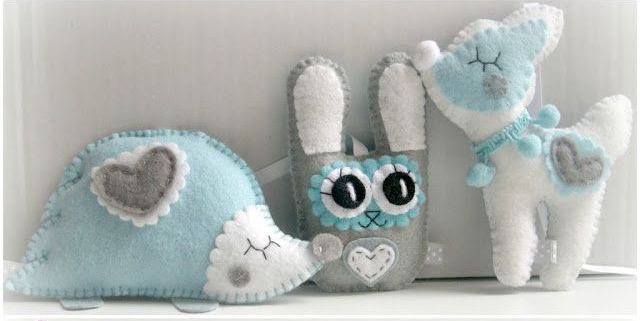
Where to buy felt?
Felt is a very affordable and quite easy to find material:
Summarizing…
I hope that this first entry of the Felt workshop from scratch It has been pleasant for you and at this time you do not have a mental stew about felt, textures, thicknesses and prints. As they say that a picture is worth a thousand words, I leave you an infographic in which I have schematically summarized today’s chapter.
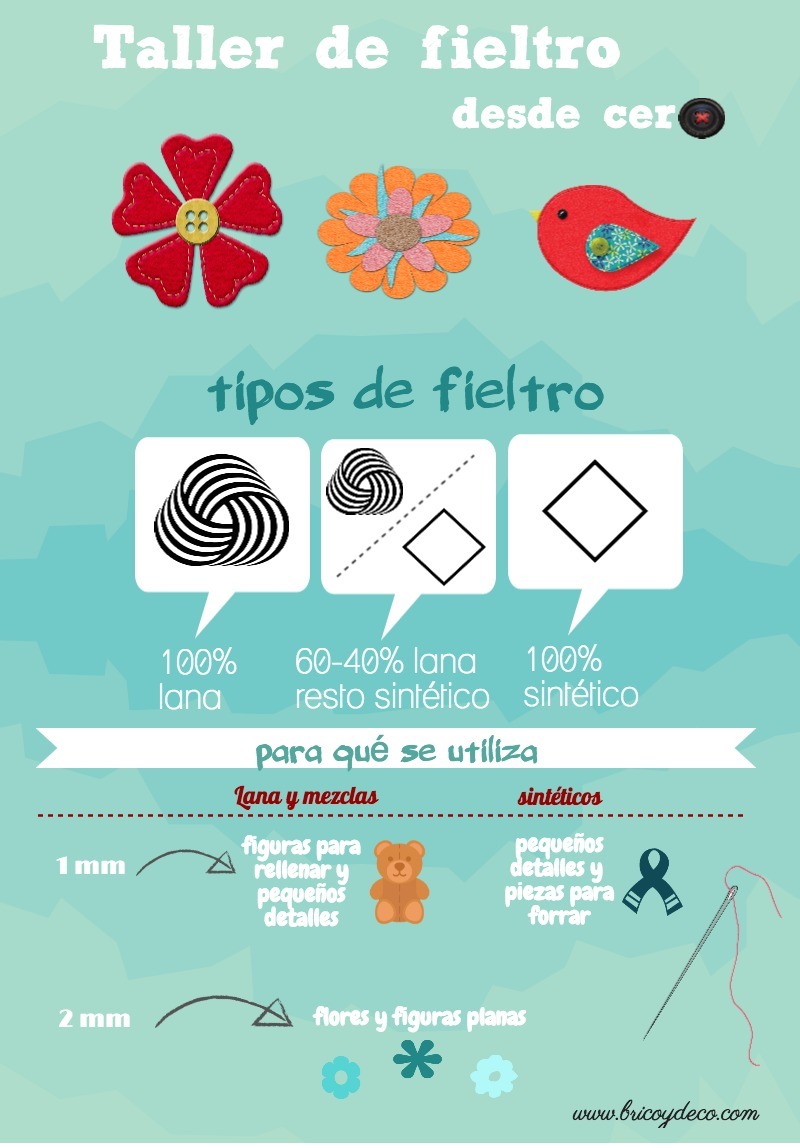
If you liked this post, I would appreciate it if you shared it on your social networks 🙂



